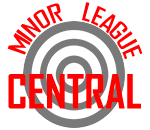Baseball, known for its rich history and enduring legacy, isn’t just about the crack of the bat in Major League stadiums. Behind the scenes, a vital component fuels the future of the sport – the Minor League. Often overlooked, this intricate system plays a crucial role in player development and the overall growth of baseball. In this comprehensive guide, we will unravel the complexities of the Minor League, from its hierarchical structure to player promotions, and explore its significant impact on the world of baseball.
The Hierarchy of the Minor League System
The Minor League system is a multi-tiered structure designed to nurture budding talent. The hierarchy spans from Rookie League, where fresh faces get their first taste of professional baseball, to Triple-A, the last stop before the majors. Each level presents unique challenges, allowing players to refine their skills and prove their mettle. For instance, teams like the Pulaski Yankees in the Rookie League provide a platform for young talents to showcase their abilities before progressing to higher levels like Single-A, Double-A, and ultimately, Triple-A.
Navigating the Player Promotion Process
The journey from the Minor League to the Major League is a carefully orchestrated dance. Player promotions are based on a combination of performance, potential, and the needs of the Major League team. Breakout performances and consistent excellence often lead to a call-up, signaling a player’s readiness for the big leagues. This process not only provides a tangible reward for hard work but also ensures that players are adequately prepared for the challenges of top-tier baseball.
Major League-Minor League Symbiosis
The relationship between Major League and Minor League teams is akin to that of mentors and apprentices. Major League teams assign players to Minor League affiliates for further development, and in return, they can call up these players when needed. This symbiosis ensures a constant influx of fresh talent into the Majors and a pool of experienced players ready to step up to the plate when called upon.
Scouts
Central to the success of the Minor League system are the scouts. These unsung heroes are responsible for identifying and evaluating talent at various levels. Their keen eye for potential can turn a hidden gem in a lower-tier team into a future Major League star. Scouts’ assessments shape the trajectory of players’ careers, making them indispensable architects of player development.
Attending Minor League Games
Attending Minor League games offers a unique and intimate experience for fans. With affordable ticket prices, fans can enjoy the excitement of live baseball without breaking the bank. Moreover, the close proximity to the action provides an unmatched sense of intimacy, allowing fans to witness the passion and determination of players striving to make it to the next level. Attendees might even find themselves watching future Major League superstars before they become household names.
Controversies and Changes
Like any sports institution, the Minor League system has not been immune to controversies and changes. Team relocations and proposed restructuring have stirred debates within the baseball community, raising questions about the system’s sustainability and impact on local communities.
In conclusion, the Minor League system is the backbone of baseball’s success, fostering talent, and providing a captivating journey for both players and fans. Understanding its intricacies not only deepens one’s appreciation for the sport but also sheds light on the relentless pursuit of excellence that defines the heart of baseball. So, next time you hear the crack of the bat in a Minor League stadium, remember that you might just be witnessing the birth of the next baseball legend.
